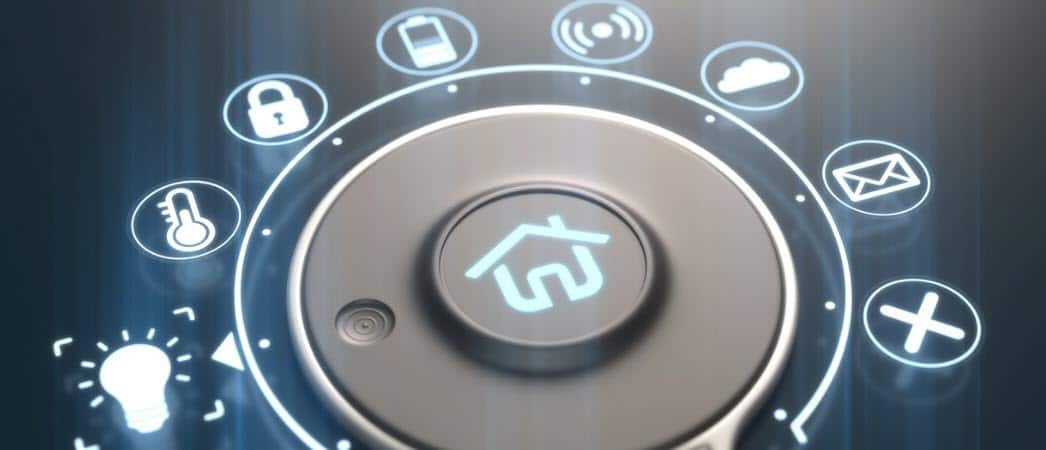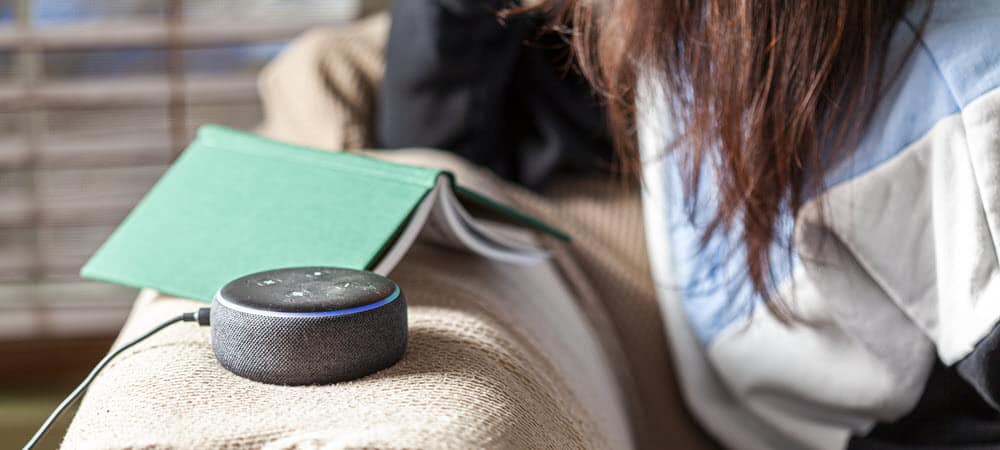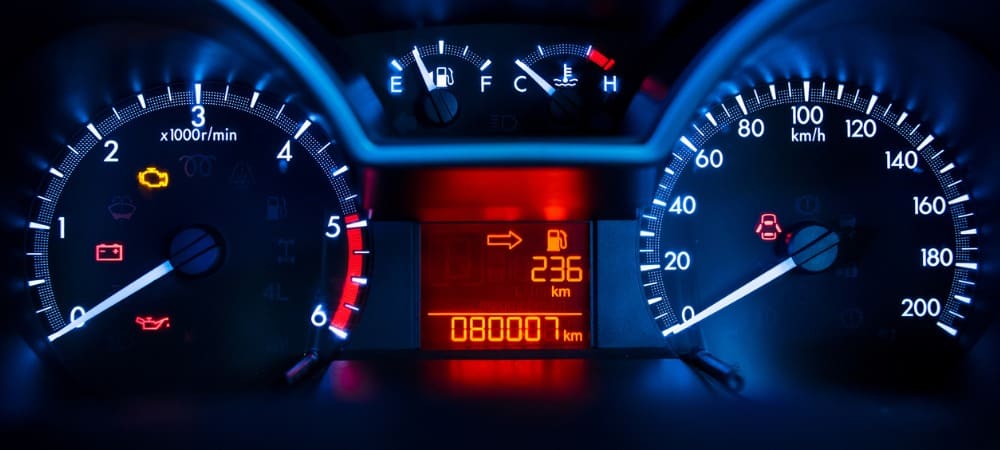A Working Definition of IoT
Much like “the cloud,” the definition of IoT varies by context and application. Here is the way I like to define it: “Non-traditional networked devices that interact with the physical world in some way” I admit that is a broad definition and could include almost anything. The phrase “non-traditional” focuses on things that aren’t typically networked. Your laptop, your printer, and smartphone are traditional devices. An electrical outlet, a lamp, and a doorbell are not. As IoT becomes more popular, the phrase “non-traditional” may seem archaic. We have to start somewhere.
Typical Characteristics and Types of IoT Devices
Although not required, most IoT devices usually have some cloud service to manage the device from the web or mobile app. The point of a networked device is that you can access it effortlessly from anywhere you have an internet connection. A networked device you can’t access remotely doesn’t have much value.
Most people think of automated devices when they think of IoT. That’s because of the smart home concept we’ve been predicting since the 1950s. This category includes things like connected lights, switches, thermostats, and other home appliances (including smart batteries). Other home-based IoT devices, like intrusion detection alarms, water alarms, security locks, and internet cameras, focus on security. The first internet camera watched a coffee pot at the University of Cambridge (geek trivia). We had IoT before we had the term IoT. The quantified-self health monitoring devices also fall into that IoT category. These include fitness trackers, connected scales, and sleep monitoring and enhancement devices. We had pedometers before, but until recently, they didn’t upload through your phone to the internet. Smartwatches and other wearable devices combine lots of IoT characteristics.
Beyond those typical devices, there is everything else. I’ll include here one of my favorite IoT gadgets, the Automatic car adapter. It interacts with my iPhone and tracks my car’s movements, gas mileage, and location. It sounds creepy, but it isn’t.
Technology Standards That Connect These Devices
You don’t see too many devices interacting through wired Ethernet these days. Wired connections are not very flexible after all. We have some cameras in our home that still use wired Ethernet. You do see other wireless standards borrowed from “traditional” computing devices like Bluetooth Low Energy and Wi-Fi. For example, most fitness trackers use Bluetooth to connect to your phone or computer.
Beyond those technologies, there is a slew of other standards, including Z-Wave and ZigBee. Those are protocols that let the devices talk to one another over their own wireless mesh network. Unless you’re a home automation nerd, these protocols don’t have much meaning to how you actually use IoT devices. One of the beauties of IoT is all this stuff is hidden from you. Companies make it, so it just works (except when it doesn’t). Home automation and internet-connected devices were around before IoT was popular. The difference now is the systems are much easier to work with.
Hubs, Systems, and Devices: How Wink and Echo Fit In
Until recently, if I wanted to change the temperature in the house, I’d have to open the Nest app. Now, my Wink hub can control the Nest. My Wink also talks to my Echo so I can give voice commands to change the temperature. That eliminates the argument of who is getting out of their warm bed to turn up the heat in the middle of the night. It also makes it easier to argue about the temperature of the house and change it without your partner knowing. Such are the problems of modern life.
Does IoT Make You Rich, Thin, and Fabulous?
Maybe. It certainly couldn’t hurt, so let’s review each of those.
Rich
Why spend twice or three times as much on an IoT thermostat as a standard programmable one would? It’s about saving money in the long term. I haven’t quantified my savings over time comparing a Nest to a standard thermostat. Nest sends me reports, but I don’t trust them. My home patterns change as much as the weather, and this day last year can’t compare to this year even if the temps are the same.
Before my IoT thermostat, I’d run through the hassle of programming it four times a year. That is when I’d remember. We’d have to configure it for heat in the winter and cooling in the summer. Then we’d have to schedule turning it off when we aren’t at home or during sleeping hours. No need to cool the house when nobody is home, or we’re asleep. Home insurance companies often give discounts for having IoT monitoring devices in the home. They realize the easier it is for you to watch and monitor stuff, the less likely they are to have a loss. Our basement is less likely to flood, and we’re more likely to set the intrusion alarm if we can do it remotely.
Thin
A fitness tracker won’t make you thin just by wearing it. Nor does wearing running shoes make me run. A fitness monitor will make you aware. That awareness could help with your fitness goals. I covered this before, but it’s less about accuracy and more about accountability. I could wear a pedometer, manually record my daily steps, and compare them over time. The app does that for me. More advanced trackers that monitor heart rate let me not just compare steps but physical exertion.
Fabulous
When these devices start interacting with each other, they do make you fabulous. Without much effort, you focus on other things in your life. For example, I have to track my mileage for tax purposes. Before my Automatic, every trip I made, I’d have to mark in a paper booklet. I’d then put that in a spreadsheet for my accountant each year. Now, my Automatic tracks my mileage. I then have an IFTTT script that copies that data to a Google spreadsheet and an Evernote notebook. All I do is mark the purpose of the trip. That’s about 10 minutes a day, I’m saving.
I also suffer from the “Did I remember to?” syndrome, especially when going on a trip. Did I remember to program the bedroom light? Did I remember to turn off the space heater? You get the idea. I don’t have to remember to program a single light switch. I can do it all through my Wink app. Since my space heater plugs into an IoT-enabled switch, I can turn it off remotely. Internet cameras point to key points in the house so I can check if I forgot something. I can’t quantify it exactly, but I’d say this knowledge reduces stress by at least a thousand percent. If I start worrying on the plane, I open up my apps and take care of everything remotely. In other words, fabulous!
Where to Get Started and What to Watch Out For
It’s not all sunshine and rainbows with IoT. You can spend a ton of money and have a home where you can’t figure out how to turn on the lights. News about hacks and security breaches are real, so consider this information before jumping on the IoT bandwagon. We’ll cover that in later articles. My quality of life is much better than living in a connected home with connected devices. What about you? Are you an early adopter of the IoT and creating a smart home or just getting started? Leave a comment below and let us know your thoughts. And honestly, I just got more confused. I want to get going with plugging in smart lights and plugs however, I can’t figure out WHICH controller to buy. I’m worried I’m going to get stuck with the BETAMAX version of Home Automation and then need to re-outfit my home…. So — WHICH standard is winning and a sure bet for the future @Dave? And what’s the best way to dip in my toe? Also, should I go with the cheap GE smart bulbs or stick with what it seems is the best — Philips hue? Thanks! Comment Name * Email *
Δ Save my name and email and send me emails as new comments are made to this post.
![]()








